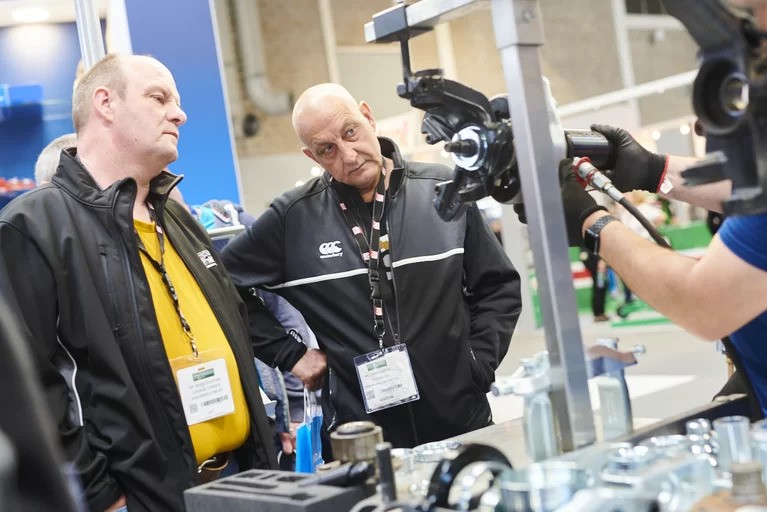SPECIAL REPORT
MOT UNDER ATTACK: YOUR BUSINESS IS AT RISK

Nine months on from the Government’s first tentative suggestion that an MOT regime review was on the cards, there is still no sign of the elusive consultation. But a shock announcement by the Secretary of State for Transport last month has jolted the industry into action.
Of course, quiet conversations with Government officials have been going on behind the scenes for some months; the industry’s representatives have been busy making friends in the corridors of power and dropping heavy hints about the disastrous consequences of mucking about with the test’s frequency.
And it did seem that friends had been made. Mike Penning, the Under-Secretary of State, graced the Retail Motor Industry Federation with his presence at its Annual Dinner just six months ago, where he reassured members of the trade that he was on the automotive industry’s side; indeed, he was one of its biggest fans.
So the revelation by Transport Minister Philip Hammond that the Government will, after all, be consulting on proposals to adopt a new test frequency was something of a bombshell – the warning sirens sounded immediately, forcing all the major trade bodies to adopt attack positions.
COST SAVING
CAT understands that three regimes will be consulted on: 4-1-1 (first test at four years, consecutive tests annually); 4-2-1 (first test at four years, second two years later and annually thereafter); and 4-2-2 (you get the picture). More shocking is that retention of the current tried and tested 3-1-1 regime appears not to be on the table at all.
Mr Hammond was widely quoted in the national media as saying: “Car technology has come a long way since the 1960s when our MOT regime was introduced. That’s why we think its right to look again to check whether we still have the right balance of MOT testing for modern vehicles. If we can move from first test at three years and yearly thereafter to four years, then two and then yearly, motorists could save £100.â€
Stuart James, RMI director, pulled no punches in his appraisal of this statement. “We understand the consumer is seeing the move as a chance to save money on their MOT bills. However, the savings of as little as £25 a year will only escalate the repair bills that will come with bi-annual testing.â€
TRADE FURY
He pointed out that maintenance standards are already slipping due to the lack of money car users currently have at their disposal. “This will in turn have a knock on effect on the safety of road users. This proposal could not come at a worse time for both garage owners and road users.â€
Independent Automotive Aftermarket Federation member Richard Small, who runs Pentland Component Parts in Edinburgh, was equally horrified at the announcement. “Yes the MOT tests cost just over £50 but that’s not a lot to pay for a Government-approved safety check,†he said. “I say if safety-critical parts such as tyres and discs need replacing then they need replacing. Reducing the frequency of the MOT test won’t change this fact, and you can’t blame the annual MOT for it.
“If the Government really wanted to save the motorist some money, fuel prices and road tax would be far bigger game. You may take the maintenance and safety of your own car seriously, but what about the guy behind you? Are his brakes working properly? When were they last checked? Oh well, I guess you can take comfort that you both saved £50 as he ploughs into you!â€
It’s an argument neatly illustrated by another IAAF member, Richard Stock of Marathon/ Benchmark Distribution. He wrote to his MP, Theresa Villiers, to register his concerns and enclosed a copy of the VT30 failure form for his family’s Vauxhall Zafira, which highlighted two “dangerous items†that he was thankfully able to put right before a potential accident could happen.
It doesn’t take much logical analysis to conclude that extending the gap between MOT tests will result in fewer defects being identified, and failed or failing parts putting the vehicle’s safe operation at risk for longer.
Richard Edy, director of the National Tyre Distributors Association, points out that, as with most other components, the vast majority of motorists do not inspect their tyres regularly – if at all – and for many, the annual MOT test is the only time that they are examined.
ROAD DEATH RISK
Edy cites figures from the Tyre Industry Federation, which show that 12 percent of tyres are illegal when they are replaced and that under the present 3-1-1 system, there are already 2.3 million tyre-related MOT failures every year.
“A move to 4-2-2 would inevitably lead to more tyre-related failures and an increase in accidents, injuries and fatalities. Already 216 people are killed or seriously injured every year in cases where tyre defects are reported and this figure would be bound to rise.
“Tyres are a safety-critical component of a vehicle and the only things that keep a car on the road. You can have the best brakes in the world, but if the tyres are bald and the road is wet, then your car won’t stop.â€
VOSA statistics show that in 2009, tyres were responsible for 14.8 percent of all Class 4 failures and advisory notices; brakes were a problem for 25.3 percent of vehicles; and suspension components for 18.9 percent. The fact that these safety critical parts were identified as being dangerous at test means their risk to road safety was removed.
In 2008, an investigation by the Department from Transport estimated that moving to a 4-2-2 regime would result in 400 extra road deaths a year. Just three years later, a new report commissioned by the Coalition Government has slashed this figure. The Transport Research Laboratory has downscaled the likely death toll by an arguably unlikely 92 percent.
In its report, it states that there have been considerable technological advances in vehicle safety, emissions and reliability and that vehicle assemblers now issue new car warranties for longer than the traditional three year period. It also notes that vehicle defects are calculated to be a contributory factor in 3 percent of accidents in the UK. Vehicle defects, it says, are an “infrequent causation†of accidents, although it does concede that there is insufficient vehicle accident investigation data to properly support this assertion.
The IAAF makes the point that while the DFT’s 2008 research was based on statistical analysis and input from outside experts, and then quality checked by the Cabinet Office, that the TRL research was “hurriedly completed and has not been subject to any quality reviewâ€.
“Nevertheless,†says the Federation’s incredulous chief executive, Brian Spratt, “their conclusions are that the changes would lead to around 30 additional deaths each year, and yet the Secretary of State feels it gives enough justification for the current system to be discarded.â€
So who’s right? Whose version of likely events do we trust? Is it a case of political spin; of lies damned lies and statistics? In CAT’s view just one extra road death would be too much. Surely we should be looking to reduce deaths rather than feigning grim acceptance at a few more, while sweeping those inconvenient bodies under the carpet.
John Ball, MOT chairman at the RMI and owner of the MoTest group of vehicle testing stations, says: “Why has there been such a change in the numbers? We need to know exactly what we are dealing with for the sake of the public’s safety. We are talking about lives being lost as a result of this move.â€
CLOSED FOR BUSINESS
The road safety factor is clearly of great concern, but there is also a financial element to lengthening MOT test intervals. Moving to a 4-2-2 test regime would be devastating to the UK’s 20,000 testing stations. It would halve the number of MOT tests conducted in the UK, which means half the amount of current revenue being earned by garages. Back in 2008, the Department for Transport recognised that  moving to a 4-2-2 system could lead to up to 40,000 job losses across the UK’s MOT network.
And the effects will be felt far more deeply by independent garages than their franchised counterparts. Around two thirds of all vehicle safety checks are carried out by the independent sector.
Of course, it’s not just workshops and technicians that would feel the pinch. With around 13 million Class 4 vehicles alone failing the MOT test each year, that adds up to an awful lot of parts that simply won’t be required.
Abandoning the annual test would wreak havoc right across the independent aftermarket. We simply can’t let it happen.










Go to comments